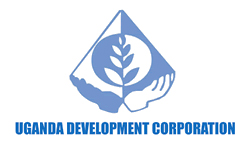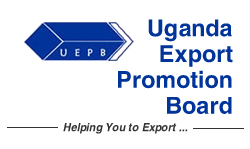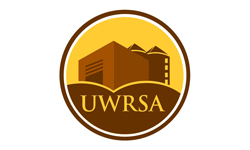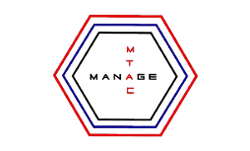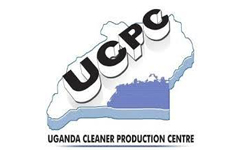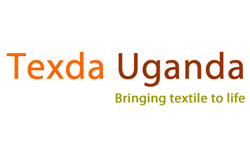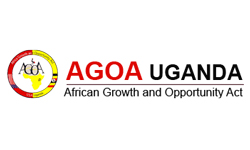Uganda’s Access to the Regional and Global Markets

I have been accosted by some members of the business sector with questions like “How do we benefit from all those Trade Agreements you are negotiating for?” a question that has provoked me to write this article.
Indeed trade is an engine of growth that drives the global economy and a catalyst of development in all countries. It is the most regulated sector in the world where 60 per cent of global treaties, protocols and agreements are trade related. Because trade disputes can lead to conflicts and wars, the global trend is to establish a trade order through negotiations either bilaterally, regionally or globally.
The birth of the World Trade Organization (WTO) as a global trading system has harmonized and created trade order. However, regional trade has emerged as a way for middle-income countries like Uganda to increase trade, spur growth, and lower unemployment rates. Uganda is a signatory to a number of regional trade agreements that have secured market access for Uganda’s products and services. Such agreements include the East African Community (EAC) Common Market Protocol, Common Market for Eastern and Southern Africa (COMESA) Free Trade Agreement and the COMESA-EAC-SADC Tripartite Free Trade Area.
Uganda is centrally located in the Great Lakes Region, and although it is disadvantaged by being land locked, it has a potential in agriculture, tourism and mineral resources for which we must find markets. Uganda is also well located, surrounded by big countries with high populations like DR Congo (69.4 million), Kenya (47.8 million), Tanzania (50.8 million) and Sudan (39.1 million) for which we must take advantage in terms of market access.
Regional Trade
Currently, Uganda’s market is dominated by regional trade with her neighbours. Regionally, Uganda enjoys trade in EAC with our exports to the EAC increasing from USD 627.4 million in 2013 to USD 771.6 million in 2015. Uganda’s imports from the EAC have also increased from USD 616.6 million in 2013 to USD 630.1 Million in 2015. Within the EAC, Uganda’s major exports include coffee, tea, spices, salt, cement, cereals, sugar and others.
Another regional trade arrangement is COMESA which is now Uganda’s leading export destination representing about 50% export market share. Uganda’s exports to COMESA have tremendously increased from USD 996.9 million in 2011 to USD 1.2 billion in 2015. Exports are mainly coffee, tea, spices and others.
Uganda is also negotiating the EAC-COMESA-SADC Tripartite with a Free Trade Area (FTA) Agreement launched in June 2015. The Tripartite FTA provides for an integrated market of a combined population of 632 million people which is 57% of Africa’s population of 1.2 billion people. The agreement provides expanded trade opportunities to Uganda’s Private Sector and the products for export include agricultural products, sugar, tea, coffee, and livestock products.
Such regional trade arrangements, not only create markets for goods and services, but also give an opportunity to development.
Global Trade
Globally, Uganda is party to a number of trade arrangements including the Economic Partnership Agreement (EPA) with the European Union (EU). The EU ranks second in Uganda’s export destination with exports valuing at USD 443 million in 2015. However, Uganda imports more from EU with imports valuing USD 637.7 million, representing a trade deficit which Ugandans should take advantage of and export more through the EPA window that provides free and unlimited access of Uganda’s exports to the EU market of 28 member states and 500 million consumers. Ugandans can export coffee, tea, flowers, fish and many other products to EU.
Uganda is also a beneficiary of the African Growth Opportunity Act (AGOA) which provides for duty-free treatment for about 6500 goods from eligible sub-Saharan African countries imported into the U.S. Uganda’s exports to the US under AGAO have dropped from USD 3.3 million in 2010 to USD 1.15 million in 2014. This is a window that Ugandans can still exploit by exporting the eligible products under AGOA which include agricultural products, forest products, textiles and apparel, footwear, and minerals and metals.
Other international trade arrangements include the WTO Services Waiver that was granted to the Least Developed Countries (LDC) Group. The waiver offers an opportunity to services and services suppliers from Uganda such as professionals to access markets in the developed countries without difficulty. So far, more than 10 countries including Canada; Australia; Norway; Korea; China; Hong Kong, China; Chinese Taipei; Singapore; New Zealand; Switzerland; Japan; Mexico; Turkey; the United States; India; Chile; and Iceland have submitted notifications to the WTO showing their willingness to provide LDC services and service suppliers with improved access to their markets. Ugandan services suppliers that can benefit from this window include among others; doctors, nurses, engineers, teachers, accountants, auditors, ICT experts and other professionals like mechanics, painters etc.
The China Africa Free Trade Agreement is another window for Ugandans to export to China. Currently Uganda’s exports to China are valued at USD 57.7 million with raw hides and skins, and oil seed as the major exports. Our imports from China are valued at USD 875 million which presents a huge trade deficit.
Uganda is a beneficiary of the India Africa Free Trade Agreement; however, Uganda’s exports to India are too low valued at USD 24.7 Million compared to the imports which are valued at USD 1.15 billion.
Key Issues to note with negotiated markets
It is one thing to negotiate market access and it is another to take advantage of it and be able to benefit. Any Ugandan with interest in exporting to the negotiated markets should take note of the following;
Duty Free Exports: Tariffs or taxes have been the major impediment to Uganda’s deeper penetration of regional markets. Uganda’s products were being subjected to high taxes in the main export destination markets which made them less price competitive. However, with market access or market opening opportunities attained through the trade negotiations, Ugandan products can now be exported duty free in EAC, COMESA, EU, USA and some WTO member countries.
Rules of Origin; to be able to export duty free to a negotiated market including the regional blocs, an exporter must prove that the products are made in Uganda. It is therefore important the private sector orients itself with applicable rules of origin in order to produce the products that are eligible for preferential market access. For the case of EAC and COMESA, only goods wholly produced using local inputs or those made using imported raw materials but have 35 per cent of the ex-factory value added within the region, can cross national borders without being taxed. For AGOA, the wholly produced rule applies or a value addition level of 35% must be attained on products whose inputs are imported from non AGOA countries in order to export them under the AGOA. Products can also access the markets based on value addition level resulting into transformation of a product, commonly known as change of tariff heading, to another product. An exporter must obtain a Certificate of Rules of Origin to be able to export to these markets. Detailed rules of origin for each market are obtainable from MTIC.
Standards; an exporter must conform to the required standards within the regional bloc where he wants to export to. For EAC and COMESA a number of standards have been harmonized within the regional blocs, with member countries giving recognition to standards marks from the exporting counties. For example, if a Ugandan is exporting goods to Kenya, Kenyan authorities give recognition to the Quality Mark (Q Mark) from Uganda National Bureau of Standards and any product from Uganda with a Q Mark is deemed to meet the required standards in Kenya.
Sensitive List; When countries open their borders for free trade in EAC and COMESA, they agreed to reserve some strategic sectors which needed protection from competition. For the case of Uganda, some of the products where we have capacity and are being protected from competition from outside countries include sugar, rice, cement, milk, fruit and ready to drink fruit juice and soaps. Any of these products coming to Uganda from an EAC-COMESA member country are subjected to import duties so as not to out-compete the locally produces products. Ugandans should take advantage of this provision to produce and export more of these products.
Non Tariff Barriers; Article 13 of the Protocol on the Establishment of the East African Community Customs Union enjoins Partner States to eliminate existing Non-Tariff Barriers (NTBs) and not introduce new ones. NTBs are those restrictions other than taxes that impede trade and restrict imports. These include import and export licenses, import quotas, special licenses, un-reasonable standards for the quality of goods, bureaucratic delays at customs, export restrictions, export subsidies, countervailing duties and many other forms of trade restrictions. Through trade negotiations, a number of NTBs that EAC member states had imposed on each other have been resolved to enable free movement of goods and services.
The Role of Government in accessing Regional markets
There is thinking in a section of the business community that during the trade negotiations, Government looks for buyers of Ugandan goods and services which is not true. Government clears the ground for potential exporters and plays a facilitation role as follows;
- Creation of a conducive policy and regulatory framework that facilitates trade and industrial development
- Infrastructure development
- Identification of markets
- Support to the Private Sector
- Formalizing MSMEs
- Entrepreneurship and skills development
Government Agencies
Government has instituted Agencies to support and facilitate the private sector to take advantage of the negotiated markets. Such agencies include;
1. Uganda National Bureau of Standards (UNBS) – to ensure quality and standards
2. Uganda Industrial Research Institute (UIRI) – for research and incubation
3. Uganda Export Promotions Board (UEPB) – for export promotion and development
4. Management Training and Advisory Centre (MTAC) – for entrepreneurship and skills development
5. Uganda Development Corporation (UDC) – facilitate industrial development through the Public Private Partnership
6. MSMEs Directorate at the Ministry of Trade, Industry and Cooperatives – to support the development of MSMEs
7. Uganda Development Bank – supports SMEs and large scale development projects in the various key growth sectors
Government works in partnership with a number of stakeholders in ensuring market access for Uganda’s products and services. These include;
1. Uganda Manufacturers Association (UMA) – for manufacturers
2. Uganda Small Scale Industries Association (USSIA) – for SMEs
3. Uganda National Chamber of Commerce and Industry (UNCCI) – support to SMEs
4. Uganda Women Entrepreneurs Association Limited (UWEAL) – for women in business
5. Private Sector Foundation Uganda (PSFU) – for enhancing private sector participation in regional and international trade
6. Kampala City Traders Association (KACITA) – to lobby government to improve the formal and informal business sector
I encourage those involved in trade to register with the above associations and many others I have not mentioned, to help you to first-track access to the available markets.
In conclusion, Uganda’s total exports to the world stand at USD 2.267 billion while the imports are valued at USD 5.528 billion, presenting a trade deficit that we need to address in order to have balanced trade. This could be achieved by;
(i) Stepping up production across all sectors
(ii) Adding value to our commodities
(iii) Ensure compliance with the required standards
(iv) Ensure access to the negotiated markets
Ugandans have the potential to fully exploit the available market opportunities. I therefore call upon the business community to step up in production levels, add value to their products and comply with the standards so as to access the government negotiated markets. The Ministry of Trade, Industry and Cooperatives is open for guidance and provision of necessary documentation for all potential exporters.
By Amelia Ann Kyambadde
Minister of Trade, Industry and Cooperatives

